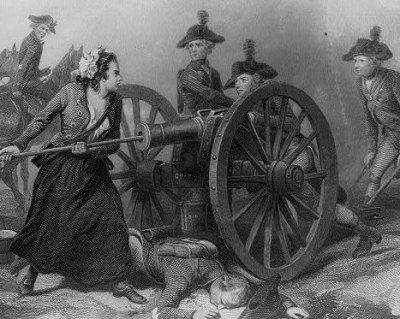Women in battle -- not a new thing

“They’ll be allowed to drive tanks, fire mortars and lead infantry soldiers into combat," said Defense Secretary Ash Carter, quoted in a news release Dec.3. "They’ll be able to serve as Army Rangers and Green Berets, Navy SEALs, Marine Corps infantry, Air Force parajumpers, and everything else that was previously open only to men."
While heralded as a historic step, American women have been charging onto the battlefield since the Revolution (at times, disguised as men). Here are four early examples:
Margaret Cochran Corbin (1751-1800): A Pennsylvanian, Corbin had a tough life – and soldiered through it.
As a child, her mother was taken captive and her father was killed during an Indian attack, according to the National Women’s History Museum website. Margaret and a brother were spared because they had been visiting an uncle, who subsequently adopted them.
As a young adult, she married John Corbin. After he joined the Colonial militia, she followed him to war, making food for the army and tending the injured.
On Nov. 16, 1776, at the Battle of Fort Washington, New York, Margaret, then 25, helped her husband, whose job was to load a cannon, the website recounted. During the battle, her husband’s partner, who had been firing the cannon, was killed. John Corbin took over, but he was also hit. Margaret Corbin then began loading and firing the cannon, but she, too, was shot.
As a result of that injury, she lost use of her left arm and was placed in the “invalid regiment,” and sent to West Point, according to the U.S. Military Academy at West Point website.
The Continental Congress in 1779 awarded her a pension, but it was half of what men would receive, the Women’s History Museum noted. Even so, she was the first woman to be given a military pension and was buried at West Point.
Mary Ludwig Hays McCauley, also known as Molly Pitcher (1754-1852): While there are several notable women soldiers from the American Revolution, this one is the most famous.
McCauley, born in New Jersey, joined her husband on the front lines during the war. At the Battle of Monmouth, June 28, 1778, in Freehold, New Jersey, she became known for trudging back and forth from a stream to the battlefield, carrying a pitcher of water for the soldiers. (Hence the nickname, Molly Pitcher).
As the story goes, during one of those trips, the 24-year-old saw her husband fall near his cannon, recounts the website for the Pennsylvania Center for the Book at Pennsylvania State University. Dropping the pitcher, she took over his position and began firing. She also was awarded a sergeant’s commission.
Deborah Sampson (1760-1827): After spending her youth as an indentured servant, she became a schoolteacher. But when the American Revolution started, she wanted part of the action. In 1782, she dressed as a man and, using the name Robert Shurtleff, enlisted in the 4th Massachusetts Regiment, according to Encyclopedia Britannica. During skirmishes, she suffered sword and musket wounds.
In some accounts, her sex was discovered during medical exams after the wounds. In other accounts, she was being treated for fever when the discovery was made. She was discharged in 1783 and awarded a small pension by Congress, the Britannica website said.
Sybil Ludington (1761-1839): The oldest of 12 children, Ludington was a teenager when called to serve. Her father, Henry Ludington, was a colonel in the Colonial army. The family lived in New York when neighboring Danbury, Connecticut (where militia munitions were stored) was attacked by British Loyalists on April 25-26, 1777. A rider came to the colonel's home to warn the family and ask for the help of Ludington’s regiment, recounts the National Women’s History Museum.
It was planting season then, and members of the regiment were on their farms. The rider who had come to warn Ludington's father was tired and unable to alert the farmers. Ludington needed to ready himself for battle, so he asked his 16-year-old daughter to ride to various farms, alerting the soldiers. The girl sped off into the night, traveling nearly 40 miles, according to Encyclopedia Britannica. By morning, the regiment was assembled, but the British, worried about becoming trapped, set fire to buildings and left. (For a story on the Danbury attack, see the website of George Washington’s Mount Vernon.)
Sources:
- America's Library.gov: The Battle of Monmouth.
- American National Biography Online: Sybil Ludington.
- Encyclopedia Britannica: Deborah Sampson.
- Encyclopedia Britannica: Sybil Ludington.
- George Washington's Mount Vernon: Connecticut raids.
- National Women's History Museum: Margaret Corbin.
- National Women's History Museum: Deborah Sampson.
- National Women's History Museum: Sybil Ludington.
- Pennsylvania Center for the Book at Pennsylvania State University: Molly Pitcher.
- U.S. Defense Department: Carter opens all military occupations, positions to women
- U.S. Military Academy at West Point: Margaret Corbin.
- U.S. National Archives: Will the real Molly Pitcher please stand up?
Related:
Men and women of the founding generation
The Great War's fashion transformation
If you would like to comment, give us a shout, or like us on Facebook and tell us what you think.

